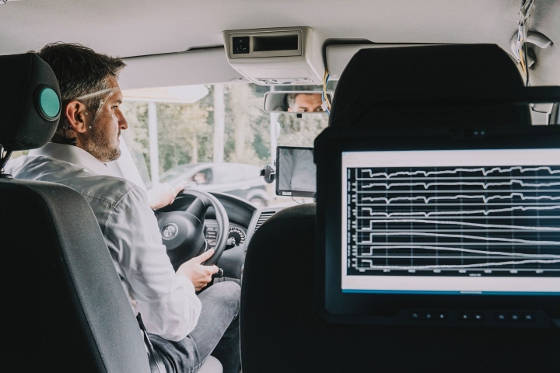 |
| December 12, 2023 | Volume 19 Issue 46 |
Designfax weekly eMagazine
Archives
Partners
Manufacturing Center
Product Spotlight
Modern Applications News
Metalworking Ideas For
Today's Job Shops
Tooling and Production
Strategies for large
metalworking plants
Trends: Cars that hear may be next big sensor thing
Tomorrow's vehicles will be equipped with a sense of hearing, which will enable them to perceive things such as bicycle bells, children playing, or the sirens of approaching emergency vehicles. Experts at the Fraunhofer Institute in Germany are working on The Hearing Car and developing AI-based system solutions for acoustic event recognition in the vicinity around vehicles.
Modern vehicles are usually insulated against external noise to meet end-user requirements for driving comfort. As a result, noises that are critical for making the right driving decisions are often heard too late -- or not at all. However, external noises such as ambulance sirens, wet roads, or a screw in a tire can provide key information to drivers.

In one scenario, researchers detect changes in attention using mobile EEG measurements where they occur: in neuronal brain activity. These EEG data can be recorded not only in laboratories but also in real-life driving situations. [Credit: © Fraunhofer IDMT/Leona Hofmann]
Conventional vehicle sensors reach their limits when it comes to detecting these noises, which is why intelligent acoustic sensor systems developed by Fraunhofer IDMT at the Oldenburg Branch for Hearing, Speech, and Audio (HSA) Technology in Germany are working hard to equip cars with a sense of hearing. In conjunction with other driver assistance systems, the smart acoustic system provides relevant information for necessary driving maneuvers or (predictive) maintenance.
"On behalf of car manufacturers and suppliers, we are developing and testing new sensor technologies and algorithms for acoustic environment monitoring, source localization, signal enhancement, and speech interaction on both test tracks and roads," says Moritz Brandes, project manager of The Hearing Car at Fraunhofer IDMT. For research and development purposes, the experts are using their own workshops to set up demonstrators and their own test vehicle to test components and algorithms. Employees there are internationally qualified after having completed test-drive training courses. On behalf of their customers, they take test drives in various climate zones.
Acoustic turn assistant -- like having ears in your blind spot
Nowadays, trucks and cars make use of cameras instead of mirrors to monitor traffic, including in the blind spot that occurs when turning. Complementing such camera systems, acoustic event analysis or detection of important ambient noises seeks to crucially enhance the sensory functions in current as well as in autonomous vehicles. At the HSA branch of Fraunhofer IDMT, specific research is being conducted into algorithms for detecting and locating traffic-related noises to ensure that tomorrow's vehicles are integrated even more safely into the traffic flow. For example, microphones in truck camera arms and mirrors offer an opportunity to expand a driver's perception of acoustic information when turning their vehicle to help prevent accidents.
Acoustic rear-view camera -- like having ears at the back of your car
Whether drivers are reversing into parking spaces, hitching up their trailers, or otherwise maneuvering their vehicles, acoustic signals can help to increase the safety of both drivers and passersby significantly. Microphones installed on vehicles and intelligent software enable drivers to interact with people outside the vehicle without having to open their windows. At Fraunhofer IDMT, research is being conducted into the accurate recording and reproduction of ambient noises in terms of location as well as the corresponding microphone hardware. This function will increase the driver's attention when executing different maneuvers and -- the developers hope -- will actively prevent accidents.
Mobile systems for electroencephalography (EEG) for optimizing human-machine interaction
Drivers need to be attentive to traffic at all times in order to react to critical situations in time. But how much does a person's attention and responsiveness change when the vehicle is driving autonomously? Researchers at Fraunhofer IDMT-HSA are tackling this question by investigating the changes in what is known scientifically as "the vigilance state." To do so, they have developed a mobile EEG sensor system that records brain activity through electrodes placed on an occupant's head. Vigilance refers to a state of sustained attention during monotonous activities. Independent sensors may one day replace physically worn systems.
Source: Fraunhofer IDMT at the Oldenburg Branch for Hearing, Speech, and Audio (HSA) Technology
Published December 2023
Rate this article
View our terms of use and privacy policy
